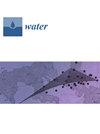Transforming Hydrology Python Packages into Web Application Programming Interfaces: A Comprehensive Workflow Using Modern Web Technologies
IF 3
3区 环境科学与生态学
Q2 ENVIRONMENTAL SCIENCES
引用次数: 0
Abstract
The accessibility and deployment of complex hydrological models remain significant challenges in water resource management and research. This study presents a comprehensive workflow for converting Python-based hydrological models into web APIs, addressing the need for more accessible and interoperable modeling tools. The workflow leverages modern web technologies and containerization to streamline the deployment process. The workflow was applied to three distinct models: a GRACE downscaling model, a synthetic time series generator, and a MODFLOW groundwater model. The implementation process for each model was completed in approximately 15 min with a reliable internet connection, demonstrating the efficiency of the approach. The resulting APIs provide standardized interfaces for model execution, progress tracking, and result retrieval, facilitating integration with various applications. This workflow significantly reduces barriers to model deployment and usage, potentially broadening the user base for sophisticated hydrological tools. The approach aligns hydrological modeling with contemporary software development practices, opening new avenues for collaboration and innovation. While challenges such as performance scaling and security considerations remain, this work provides a blueprint for making complex hydrological models more accessible and operational, paving the way for enhanced research and practical applications in hydrology.将水文 Python 软件包转化为网络应用编程接口:使用现代网络技术的综合工作流程
复杂水文模型的可访问性和部署仍然是水资源管理和研究中的重大挑战。本研究介绍了一种将基于 Python 的水文模型转换为网络应用程序接口的综合工作流程,以满足对更易于访问和可互操作的建模工具的需求。该工作流程利用现代网络技术和容器化来简化部署过程。该工作流适用于三种不同的模型:GRACE 降尺度模型、合成时间序列生成器和 MODFLOW 地下水模型。在可靠的互联网连接条件下,每个模型的实施过程大约在 15 分钟内完成,这证明了该方法的高效性。由此产生的应用程序接口为模型执行、进度跟踪和结果检索提供了标准化接口,便于与各种应用程序集成。这种工作流程大大减少了模型部署和使用的障碍,有可能扩大复杂水文工具的用户群。这种方法将水文建模与当代软件开发实践相结合,为合作与创新开辟了新途径。虽然性能扩展和安全考虑等挑战依然存在,但这项工作为使复杂的水文模型更易于访问和操作提供了蓝图,为加强水文研究和实际应用铺平了道路。
本文章由计算机程序翻译,如有差异,请以英文原文为准。
求助全文
约1分钟内获得全文
求助全文
来源期刊

Water
WATER RESOURCES-
CiteScore
5.80
自引率
14.70%
发文量
3491
审稿时长
19.85 days
期刊介绍:
Water (ISSN 2073-4441) is an international and cross-disciplinary scholarly journal covering all aspects of water including water science and technology, and the hydrology, ecology and management of water resources. It publishes regular research papers, critical reviews and short communications, and there is no restriction on the length of the papers. Our aim is to encourage scientists to publish their experimental and theoretical research in as much detail as possible. Full experimental and/or methodical details must be provided for research articles. Computed data or files regarding the full details of the experimental procedure, if unable to be published in a normal way, can be deposited as supplementary material.
 求助内容:
求助内容: 应助结果提醒方式:
应助结果提醒方式:


